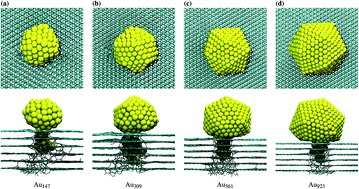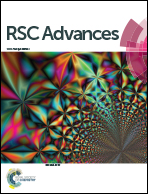Immobilization of Au nanoparticles on graphite tunnels through nanocapillarity
Abstract
Atomistic computer simulations on the generation of nanotunnels on graphite and the subsequent immobilization of gold nanoparticles are presented in this work. A Morse potential dependent on the coordination of carbon atoms was parameterized based on density functional theory including long dispersion forces. The set up chosen is such that a direct comparison with the experiments is possible. The model is able to reproduce crucial experimental aspects such as the phenomena of capillarity and the final height of the immobilized nanoparticle. Results presented here can inspire the design of new platforms for protein immobilizations.


 Please wait while we load your content...
Please wait while we load your content...